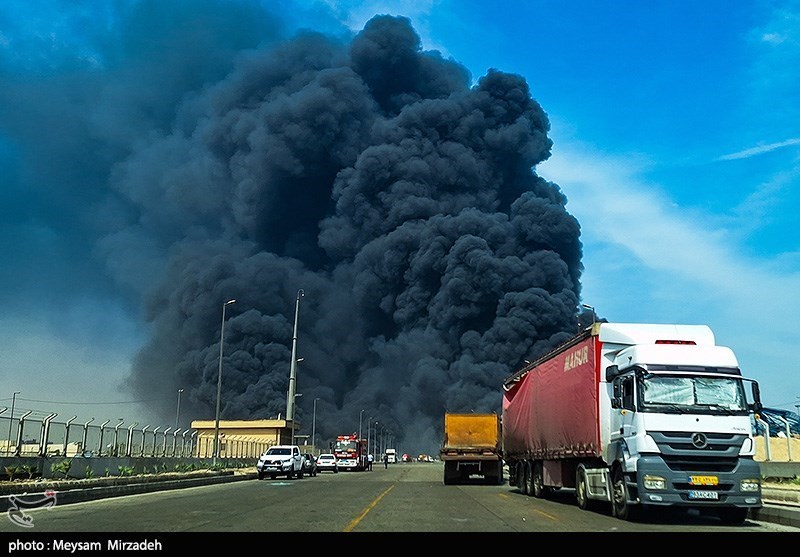Alwaght- Describing Israeli war on Gaza as a systematic and gradual masacare, the UN has announced that Gaza Strip has become the earth's "hungriest place" and everyday an unknown number of children lose their lives due to malnutrition, at a time just a few kilometers from the war-torn coastal enclave the food storages are full of international aids.
The United Nations Relief and Works Agency for Palestine Refugees (UNRWA) said its warehouses in Amman, the capital of Jordan, just three hours from Gaza, "contain enough food to feed more than 200,000 people in Gaza for a full month."
However, the Israelis are not allowing this aid to enter under various pretexts in order to force Palestinians to migrate from Gaza. Jens Laerke, a spokesman for the United Nations Office for the Coordination of Humanitarian Affairs (OCHA), told a press conference on Friday that only 600 of the 900 aid trucks authorized to reach Israel’s border with Gaza had been allowed to enter. He stated that "a combination of administrative and security obstacles has made it almost impossible to safely deliver aid to the Gaza Strip."
"We can no longer continue distributing food. We have no way to reach the people," a spokesman for the UN office in Gaza said.
Meanwhile, the northern Gaza Strip has been hit hardest by the shortages, with only 20 percent of aid being received due to military restrictions. In a controversial move, Israeli forces have announced that aid will only be available in certain areas of southern Gaza. Thousands of residents in the northern and central areas have to travel dozens of kilometers of unsafe roads to reach these areas.
Arabic media outlets have reported on the difficulties of obtaining food and medicine, as reported by local residents. For example, Aisha Mohammad, a mother of five, from the Jabalia camp, said "we wait in line for 12 hours to get a loaf of bread."
According to the United Nations, daily food rations in Gaza have been dropping to 600 calories from 1000 calories per person.
Shocking figures, severe shortage of sources
According to the World Food Program (WFP), 85 percent of Gaza residents (about 1.9 million) face food insecurity and 35 percent of them are in a catastrophic hunger (IPC phase 5).
At best, the aids entering Gaza through Rafah border crossing with Egypt for the total population of over 2 million are 30 trucks a day, while before October 2023, this was 500 trucks a day. This is despite the fact that, according to the UN, no trucks were allowed to enter Gaza through the Karm Abu Salem crossing for three consecutive days (May 27-29). During this period, more than 600 trucks carrying food, water, medicine and fuel were stopped at the border.
Reports from the World Health Organization (WHO) indicate that 65 percent of essential medicines in the Gaza health ministry's stockpiles have run out, including antibiotics and medicines for chronic diseases.
Access obstacles: Between blockade and destruction
Hunger in Gaza goes beyond shortage of sources and has to do with systemic disruption in the aid distribution. In fact, crisis has not deteriorated due to blockade and restrictions imposed by Israeli occupation, but also the distribution is hit by disorder, lack of coordination, and sometimes corruption. According to local reports in recent days, in 13 separate incidents in Rafah and Khan Younis, 15 civilians were killed during aid distribution.
On the one hand, the destruction of infrastructure has severely affected the distribution of aid, with the UN reporting that 70 percent of Gaza’s main roads are damaged or unusable, hampering aid delivery. On the other hand, fuel shortages have disrupted 50 percent of the distribution mechanisms.
Meanwhile, the Israelis are also constantly disrupting limited aid operations. According to the International Committee of the Red Cross (ICRC), 12 incidents against aid teams were recorded in 10 days (May 20-30).
In recent weeks, under intense international pressure to end the food blockade, the US, together with the Israeli regime, launched a project called “Safe Zones for Aid Distribution,” which was intended to provide aid directly through local forces. However, on the very first day, the showy nature of this plan became apparent.
According to international institutions, at present, in addition to extensive food crisis, vital medicines like insulin, antibiotics, and anesthesia medications are almost rare in Gaza and the vaccine and blood storage systems have collapsed due to power outage.
In the shadow of inaction of international organizations, the humanitarian situation in Gaza has reached a grade of deterioration rarely seen in modern history. Despite the potential international aids, entry restrictions, disorder in distribution, and security challenges have left millions waiting for food, medicine, and shelter. The need for urgent, effective and coordinated global action has never been more urgent.



























